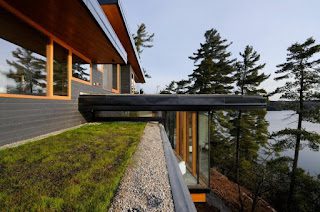Few sights are as beautiful as a home perched on a craggy cliff, overlooking
the ocean—except when that cliff starts to crumble. That’s what frightening video footage has shown is happening to the
coastline in Pacifica, CA, just south of San Francisco.
Ten days of El Niño rains battering this bluff have caused portions to
collapse into the sea. And since some people’s apartments are situated so close
to the brink, many lost their backyards and porches, and now must be wondering
if their homes are next.
The city of Pacifica has declared a local state of emergency. So far, it has
condemned 20 homes as uninhabitable,
ordering its inhabitants to vacate the premises. More may follow, because El
Niño is far from over.
As sudden and dramatic as this may seem, the U.S. Geological Survey—which studies the impact of
storms and erosion on shorelines—has found that the cliffs in Pacifica have been retreating at an average
rate of about 2 feet per year since 1950. But it’s hardly the only area at risk;
coastal erosion affects many areas.
So if you’re pining for a cliff side retreat of your own, is there anything
you can do to keep it from slipping out from under you?
According to environmental designer and
science teacher Pablo
Solomon, certain beaches are indeed safer than others.
“There are basically two types of
beach fronts: those in which the ocean is depositing sand and creating more
beach, and those in which the ocean currents and waves are steadily eroding them
away,” he explains. Buying a home on the former is way better than the
latter.
“You just do not build on an eroding beachfront and expect to
not end up in the ocean sooner or later. When you are building on dirt cliffs,
it makes no difference if they are 8 feet tall or 80—they will eventually erode
and collapse. In fact, building on
stone cliffs is not always a sure answer. Give the ocean enough time, and
castles, forts, and anything can fall.”
The USGS features a map identifying areas most vulnerable to coastal hazards such as
erosion. And if you do find yourself swooning over a home near the ocean, you’ll
want to bring in some additional experts to assess if it’s a solid purchase, so
to speak.
“Buyers considering these types of homes really need to bring in structural
and environmental engineers as part of their due diligence.” “Depending on the makeup of the land, it may
be that some terrains simply can’t safely support a structure on them for the
very reasons these homes are collapsing. But other areas could be fine.”
So until you’ve done your research, don’t let the crumbling cliffs
in Pacifica scare you away from a home with an ocean view. In the words of one
Pacifica renter, there is a slightly brighter side to the situation:

